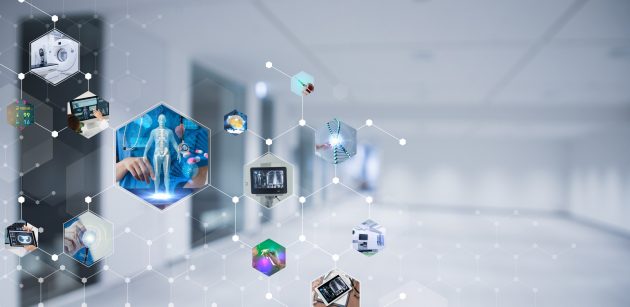
Medical devices to revolutionize with integration of Cloud, IoT and AI for improved patient outcomes
by CM Staff
Personalized, non-invasive, lightweight, and portable therapeutic medical devices are an emerging growth market trend

Medical Devices to Revolutionize with the Integration of Cloud, IoT and AI for Improved Patient Outcomes
SANTA CLARA, Calif. — Frost & Sullivan’s recent analysis, Pipeline Analysis of Phase III Medical Therapeutic Devices: The Potential Game Changers and Growth Enablers, finds that the technology developmental trend for pipeline therapeutic medical devices in the late stage (Phase-III) of clinical development or clinical trial is shifting towards manufacturing portable, lightweight, and easy-to-use devices for patients, allowing their use in home settings.
The integration of therapeutic medical devices with digital technologies aims to increase patient engagement and improve the treatment outcome for their disease condition, especially during and post the COVID-19 pandemic.
“Therapeutic medical devices delivering energy or electric fields non-invasively to the specific affected sites and eliminating systemic side effects can explore business opportunities in chronic diseases in oncology and neurology,” said Ashish Kaul, technical insights senior research analyst at Frost & Sullivan, in a prepared statement. “Going forward, advance manufacturing technology such as 3D printing can enable medtech companies to meet the market need in case of urgencies such as COVID-19 pandemic or high market demand for fast manufacturing.”
Kaul added: “Medical device companies are exploring different biodegradable and recyclable plastic material to include it in its manufacturing process. Additionally, this use of biodegradable and recyclable materials in home-based therapeutic medical devices will increase significantly in the next five to six years.”
The increasing permeation of therapeutic medical devices with digital technologies such as mobile applications presents immense growth prospects for market participants, including:
- Innovative non-invasive, lightweight, miniaturized, and portable medical devices can be developed using printed electronics components such as sensors and circuits.
- Needle-less and self-use medical devices can be developed to eliminate painful experiences during self-injection activities.
- Therapeutic medical devices can be integrated with a cloud system, internet of things (IoT), and artificial intelligence (AI) so that the information collected by the devices can be analyzed and used for advanced research to understand complex diseases and develop effective treatments